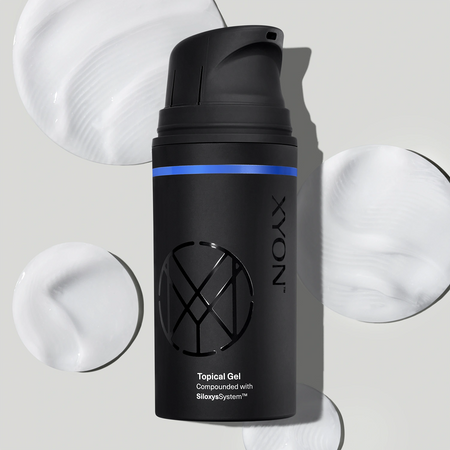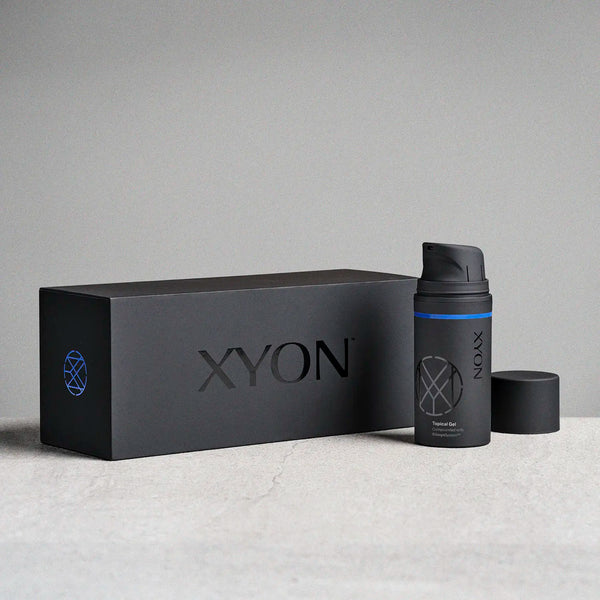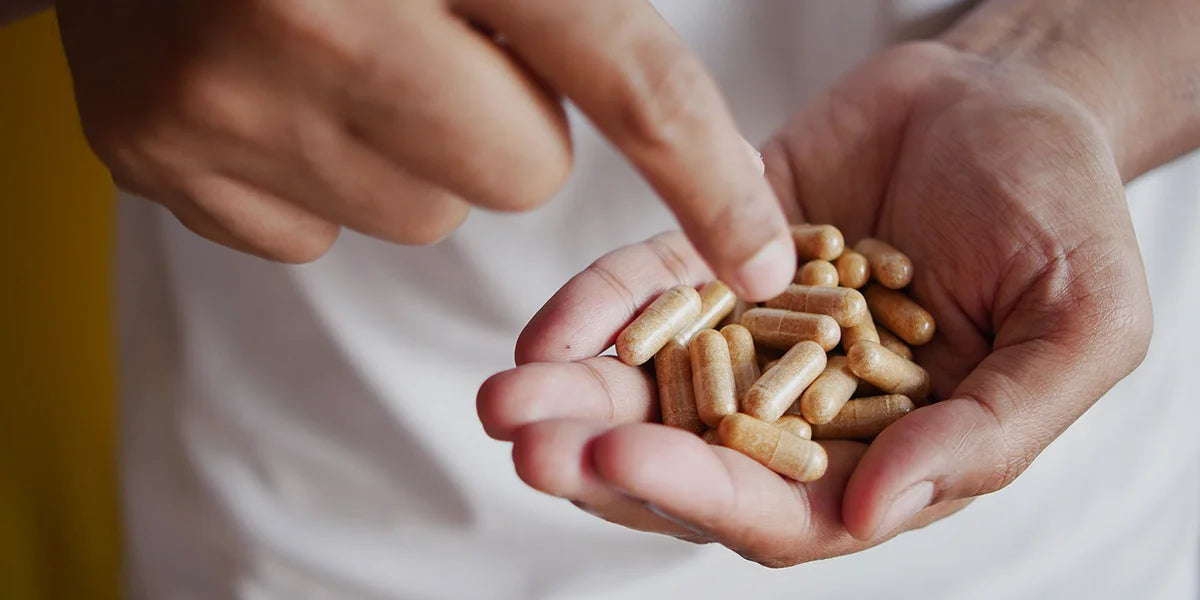Reduction of dihydrotestosterone (DHT) is the goal when treating the root cause of androgenetic alopecia. But there may be more than one way to achieve this. Saw palmetto has gained attention in recent years as a natural anti-androgen, with some studies investigating its potential applications in treating both male pattern hair loss and another DHT-dependent condition, benign prostatic hyperplasia (BPH). But there are some key differences between saw palmetto vs finasteride in terms of mechanism, efficacy and safety in the treatment of hair loss.
Topical finasteride is clinically proven to lower DHT and our patented gel helps maximize its effectiveness.


Saw palmetto can help with hair loss. But need something stronger?
Saw palmetto vs finasteride for hair loss: Overview of differences
Saw palmetto
- A botanical extract derived from the berries of the saw palmetto plant
- Non-selectively inhibit two forms of the 5-alpha reductase enzyme (Types I and II)
- Lowers DHT by blocking conversion of testosterone to DHT and preventing DHT from accessing hormone binding sites
- Less potent DHT lowering effect
- Unknown half-life
- Wide range of doses, 320 mg (oral) based on one available study (Rossi et al., 2012)
Finasteride
- A synthetically manufactured azo-steroid belonging to a class of medications called 5-alpha reductase inhibitors (5-ARIs)
- Selectively inhibits one form of the 5-alpha reductase enzyme (Type II)
- Lowers DHT by blocking conversion of testosterone into DHT
- More potent DHT lowering effect
- Half-life of 6-8 hours
- FDA-approved at a dose of 1 mg daily for male pattern hair loss
Saw palmetto vs dutasteride: DHT effects
Saw palmetto and finasteride are agents known for their ability to inhibit the production of the hormone DHT, which is considered a cause of male pattern hair loss and to a lesser extent, female pattern hair loss. Both agents will result in a drop in DHT levels, but where they differ is in the size of this reduction.
Finasteride is noted to lower serum (blood) DHT levels by about 70% (Zito et al., 2022). This DHT lowering effect is sustained over the course of several days. If you were to hypothetically stop taking your medication, your DHT levels would increase, but slowly over time. This is due to the fact that the medication remains present in your body until it is fully eliminated by the body.
By contrast, the DHT lowering effect of saw palmetto is less concrete and not attributed to a specific dose. However, there are tissue-specific studies available that can provide a rough estimate of its DHT-lowering capabilities. In prostatic tissue, where 5-alpha reductase activity is higher than other regions of the body, saw palmetto was found to reduce DHT concentrations by about 30% (Marks et al., 2000). Unfortunately, we do not have definitive data on the DHT impacts of saw palmetto on blood or scalp concentrations of DHT. But based on this available data, we can deduce that saw palmetto is likely less potent than finasteride.
Is saw palmetto better than finasteride?
Available efficacy data show that finasteride is generally better at treating hair loss compared to saw palmetto. One saw palmetto vs finasteride study looked at the differences in efficacy between once daily oral finasteride and taking a saw palmetto supplement. Nearly twice as many study participants receiving finasteride experienced evidence of hair regrowth. The same study found that saw palmetto did not seem to benefit the scalp as uniformly as finasteride and that regrowth was also less dramatic (Rossi et al., 2012).
Saw palmetto is a less potent agent, but there may be reasons to choose it, including a lower risk of side effects. This may be due to saw palmetto’s androgen-independent benefits, such as anti-inflammatory properties, that may help counter secondary causes of follicular miniaturization (Kwon et al., 2019). The extract’s gentler effect on DHT levels may also explain why the supplement does not typically cause sexual side effects.
Another consideration is the accessibility and various delivery methods of these agents. Both are available in oral and topical forms. But since saw palmetto is not a pharmaceutical, it may be added into various products (e.g. shampoo, conditioner). Finasteride on the other hand, will require a prescription in either oral or topical form.
Still curious about saw palmetto? XYON's DHT-blocking shampoo exclusively features this ingredient to help optimize your hair loss treatment of choice.
Saw palmetto vs finasteride side effects
Saw palmetto and finasteride differ in both the type and severity of associated side effects. Clinical studies show that the side effects of oral finasteride are primarily sexual in nature, whereas saw palmetto has been linked to gastrointestinal disturbances such as loss of appetite and diarrhea (Gupta et al., 2022). Moreover, side effects of finasteride can vary greatly from patient to patient in their intensity and duration. In some cases, the quality of life impact of these side effects can be quite significant (Irwig & Koluka, 2011). To date, saw palmetto has not been connected to any cases of permanent side effects.
Having said that, both agents are generally well-tolerated and a doctor or other healthcare professional can provide guidance on your individual risk for side effects, if this is an area of concern for you.
Saw palmetto vs finasteride: Takeaway
Saw palmetto and finasteride are known for their ability to lower concentrations of DHT, a male sex steroid hormone that plays a role in the development of male pattern baldness. But they differ in their mechanisms of action, potency and side effect profiles.
Research suggests that saw palmetto may come with a lower risk of side effects, but there is a trade off in the form of less dramatic DHT reduction. This may make saw palmetto a less viable option for more advanced cases of male pattern hair loss. Ultimately, the decision to use one agent over the other will depend on your tolerance for side effects and the characteristics of your case of hair loss. If you have any questions about the use of saw palmetto vs finasteride for hair loss, consider reaching out to your doctor.




